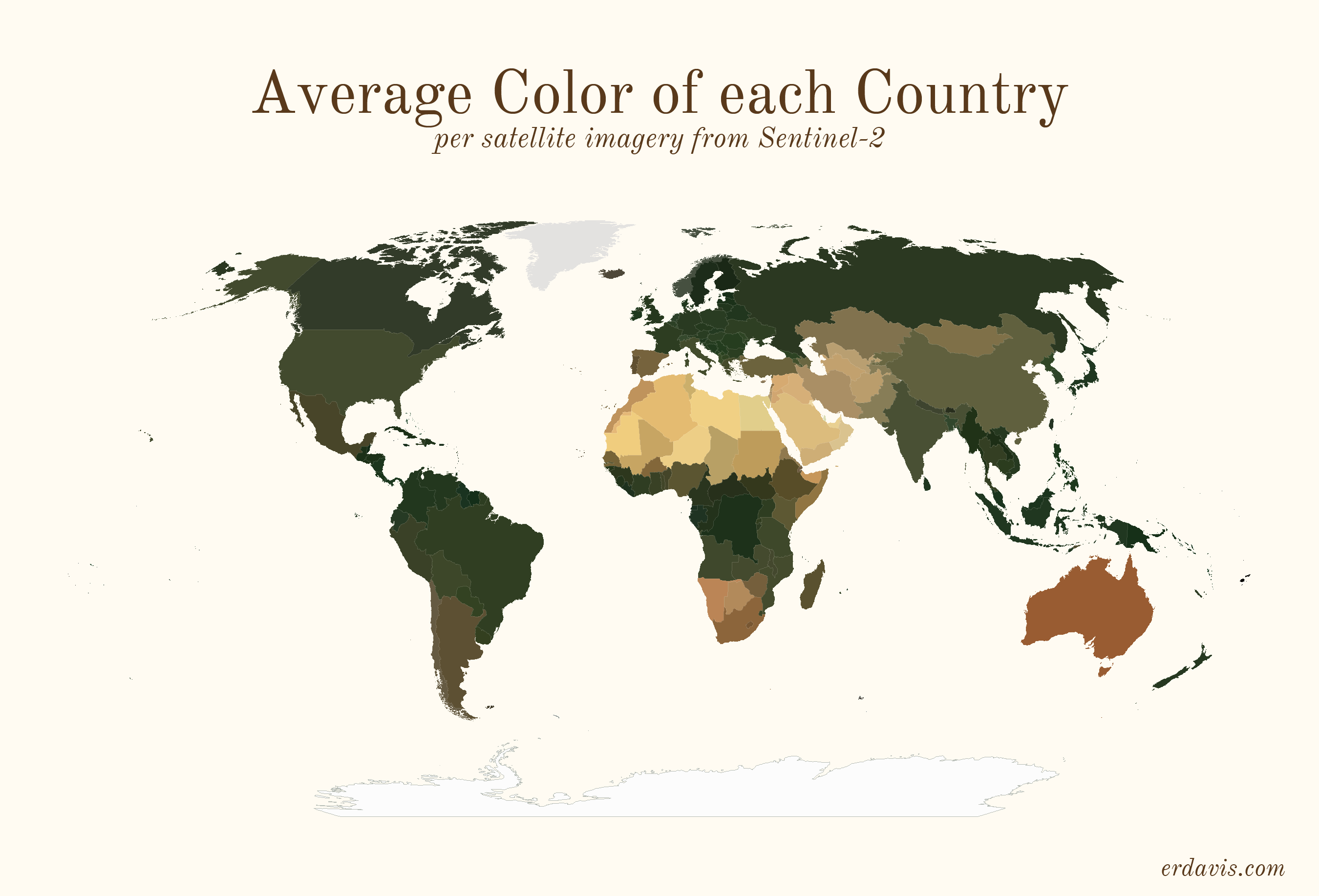Maps
The Average Terrain Colors of Countries Around the World
When you think about countries with an abundance of desert like Egypt, you generally think of yellow and orange sand colors. Likewise, countries with rainforests like Brazil most likely generate thoughts of deep greens. What color are the rest of the countries in the world?
Data visualization artist Erin Davis used satellite imagery from Sentinel-2 to illustrate the average color of the terrain in countries around the world.
Click below to zoom
The graphics use a choropleth map visualization to show the average color of the terrain in each country. Some countries, like snow-covered Greenland and Antarctica, are clearly colored how one would expect. Others take on a darker or more jewel-toned hue that reflects their unique landscapes.
The artist also illustrated the average color of each county in the United States for a more granular view of the country. The visualization highlights the forest-rich regions of the Northeast, Mid-Atlantic, and South East as well as well as the rugged physical geography of southwestern states like Arizona and New Mexico.
Click below to zoom
There are five major classes of land biomes in the world: forests, deserts, savannah, tundra, and grasslands. The nature of these biomes heavily impact the color of the areas picked up by satellite. These are the divisions of each biome around the world:
-
- Forests (40.1%): Forest biomes are populated by various species of deciduous and evergreen trees. This type of biome also includes rainforests, one of the most important forests in the world.
-
- Deserts (25.9%): Deserts are categorized as areas with very little rainfall. Daytime temperatures are typically high and nighttime temperatures are low.
-
- Savannah (16.7%): Savannah is tropical grasslands that are somewhere between lush tropical rainforests and desert regions. Their rainfalls typically occur during summer months, which means it evaporates quickly. These areas are prone to drought.
-
- Tundra (10.5%): The climate of the tundra is extreme cold. Temperatures in the winter often go below freezing and plant life is either nonexistent or dormant for much of the year.
-
- Grasslands (6.8%): Grasslands (also known as the Prairies in North America and the Pampas in South America) are temperate regions with warm summers and cool winters.

